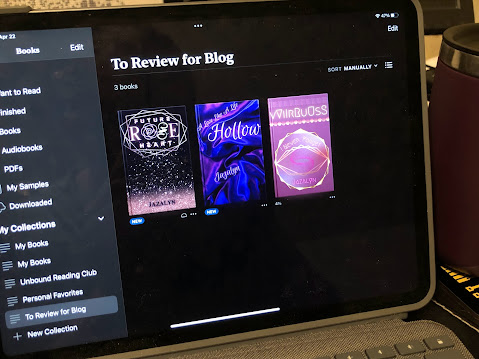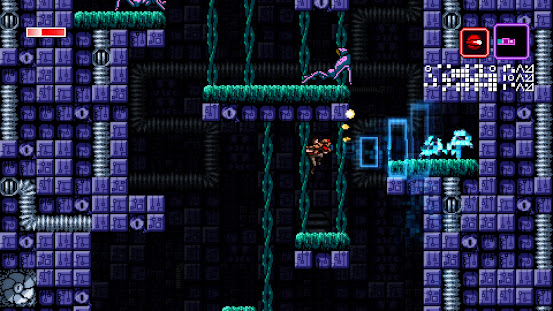I thought it would be best just to shift the Sunday post to today instead so that I can do another read-through of Jaz Jazalyn's vVilRuUsS and take additional notes for the review. I wrote a small post yesterday on what to expect with the blog reviews—350 to 650 words, favorite poems highlighted, and a focus on the narrative over the poetry itself excluding the noted favorites.
In hindsight, it might have been best just to edit that in elsewhere or even drop the criteria here. I partly feel like I rushed myself as I was doing the Goodreads brief for the first book. Either way, I feel better knowing how to tackle them with the first full dropping sometime next week. I'm going to aim for Thursday or Friday as I did with the Axiom Verge double bill.
Without further ado, let's start the weekend link blog with one of my favorite YouTubers with a musical number...
I've mentioned MsMadLemon a couple times here on the blog, while boosting her YouTube uploads over on Twitter and Mastodon—where I also did a little promo for her blog and channel. I don't think words could proper cover the attention she gives to her work whether its in photography, video, microcomputers, music, and art!
Weirdly, my first introduction to MsMadLemon was through a video where she talked about her treatment within the retro community, but then I decided to view some of her other videos and...well, I've been a fan ever since!
Both her videos and music have been a huge help in recent years, allowing me to soldier through some of the most stressful moments without succumbing to them. If I'm not listening to CheapShow, Kermode and Mayo's Take, or Stone Age Gamer while I'm writing, I'll usually have one of her albums on repeat.
If you watched any of her videos, you may recognize some of the tunes she composed and Zaman is no exception. It's the namesake track from her latest album that has its roots right on YouTube thanks to some sampling from a Yamaha Reface CS.
If you any interest in learning about the Amiga, retro computers, electronics, tea, or just want to enjoy a good vlog, do check out her channel and her website! You will be in for an amazing time!
Other Things I Listen to When I Write...
- Austra has been on repeat with the new work-in-progress—more or less all four of their (and her) albums as seen on Bandcamp
- The Axiom Verge 2 soundtrack for some of the newer blog posts, although I don't think I had it on during the review
- The GameGrooves Uncovered podcast (usually) hosted by Prog Metal artist, Ro Panuganti, where he interviews musicians and artists in the video game music scene with an emphasis on covers, is another good source of background noise. That's not criticism in the slightest—I think it's a good pod—but having familiar voices keeps me calm and helps me focus on just typing the words out
What Else I've been listening to...
There was this little gem of an album I discovered last weekend while I was browsing through Bandcamp...
I initially logged into Bandcamp just to download my copy the recently released album from GameGrooves—a Ska tribute to Final Fantasy VII in collaboration with Ska Punk International. Below the download links were other artist recommendations from GameGrooves and Lacey Johnson was the first name on there with her latest album of Metroid covers.
So, as I'm listening to one of the tracks, I notice the above album in her discography so I go and check it out. In short, the first track was amazing enough that I decided to buy it then and there alongside Banjo Guy Ollie's latest original composition.
I've mentioned playing the Persona games in passing, but in short, I love playing them! I think they a good blend of story, atmosphere, and gameplay—especially Persona 5 Royal!
This cover album, focusing on Persona 4, does that games soundtrack justice. The rock and pop fusion that permeates the game is turned up to eleven in the best way possible with the way Johnson brings out the essence of each track. If you loved Persona 4 and its soundtrack, I'd buy this album!
I should also mention that Pocket Vinyl also released their latest album in February titled You Never Say Goodbye When You Leave, that you can purchase over on their Bandcamp page, or you could stream it on your preferred streaming service. Below is a music video for the track "Strange Images"...
I still need to give this album a proper listen and maybe I'll do a review for the blog down the line...
Any New Pods in the Queue? (Past and Present)
- The Dollop, in which comedians David Anthony and Gareth Reynolds tell obscure stories from American history, mixing it in with a good amount of improv (1st personal episode was #579 where they tell the story of John Alexander Downie)
- All Fantasy Everything where American comedians, including Ian Karmel and Sean Jordan) draft pop culture phenomena and ephemera, which feels like a little bit of CheapShow mixed in with Stone Age Gamer's May-Mania tradition (1st personal episode was in February where they drafted Little Debbie snacks with another notable one being their 2022 US pop culture draft...which is useful if you're like me and don't usually follow what's trending)
- This Week in Retro—a current events podcast in which Neil (RMC—the Cave), Chris (005 AMIGA), and Dave talk about what's going on with vintage tech.
- Aut-Hour hosted by comedy writer Sara Gibbs where she interviews authors on the autistic spectrum (I don't remember my first personal episode with this one, but Lizzie Huxley-Jones who edited Stim: An Autistic Anthology was on it)
- Threedom, in which Scott Aukerman, Lauren Lapkus, Paul F Tompkins hang out, tell stories, and do improv (1st personal episodes were #159 and #159.5)











